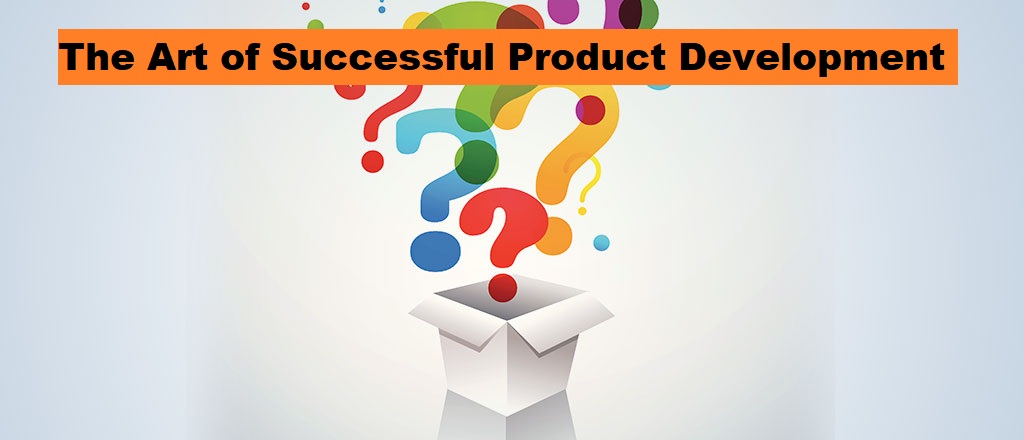
In today’s fast-paced and competitive business landscape view, the ability to develop successful products is crucial for companies or CEOs looking to stay ahead of the tech curve. Effective product development involves well-defined stages, strategic planning, and a customer-centric approach. In this page article, we will explore the critical views aspects of product development, discuss strategies for success, highlight challenges faced, and glimpse into the future of this dynamic field.
Introduction to Product Development
Product development is creating new or improved products that meet customer needs and generate value for the business. It encompasses various activities, including ideation, research, design, testing, and production. By bringing together creativity, technical expertise, and market insights, product development aims to transform ideas into tangible and marketable solutions.
Importance of Product Development
Effective product development holds immense importance for businesses across industries. It allows companies to:
Stay competitive: By continuously innovating and launching new products, businesses can differentiate themselves from competitors and capture market share.
Meet customer demands: Product development ensures that companies create offerings that align with customer needs, preferences, and expectations, resulting in higher customer satisfaction.
Drive revenue growth: Successful products generate revenue streams and contribute to the business’s overall financial health and development.
Enhance brand reputation: Developing high-quality products that deliver value to customers helps build a positive brand image and fosters customer loyalty.
Critical Stages of Product Development
Conceptualization
The product development journey begins with conceptualization, where ideas are generated and evaluated. This stage involves brainstorming sessions, market research, and identifying opportunities to fill gaps in the market. The goal is to select and align the most potential ideas with the company’s strategic objectives.
Research and Analysis
Once the ideas are identified, thorough research and analysis are conducted to understand better the target market, customer needs, and existing competition. This stage involves market research surveys, focus groups, competitive analysis, and gathering feedback from potential customers.
Design and Prototyping
The design and prototyping stage brings concepts to life. Designers, engineers, and developers work collaboratively to create detailed product specifications and prototypes and iterate on feedback-based design iterations. This iterative process helps refine the product and ensures it meets the desired functionality, usability, and aesthetics.
Testing and Iteration
QA Testing and iteration play a vital role in product development. It involves conducting rigorous testing to identify and fix any issues or flaws in the product. User feedback is collected through beta testing, user acceptance testing, and usability studies. This feedback is invaluable for refining the product further and ensuring it meets customer expectations.
Production and Launch
Once the product has undergone rigorous testing and refinement, it moves into production. This stage involves setting up manufacturing processes, sourcing raw materials, and ensuring quality control. Finally, the product is launched into the market with a robust marketing and sales strategy.
Effective Strategies for Successful Product Development
To achieve success in product development, companies can employ various strategies that enhance the likelihood of creating and launching successful products. Here are a few key strategies:
User-Centered Design
Putting the user or the final personas at the center of the design process is critical for developing products that meet their needs and expectations. Companies can create intuitive and user-friendly products by conducting user research, gathering feedback, and incorporating usability testing throughout the development cycle.
Market Research and Competitive Analysis
Thorough market research and competitive analysis provide insights into consumer trends, market gaps, and the competitive landscape. This information helps companies identify market opportunities, understand customer preferences, and make informed product features and positioning decisions.
Agile Development Methodology
Adopting an agile development methodology enables companies to respond quickly to changing market dynamics and use customer feedback. Agile methods emphasize iterative development, frequent collaboration, and flexibility, allowing teams to adjust and improve throughout the product development lifecycle.
Cross-Functional Collaboration
Effective product development requires cross-functional collaboration between different teams, such as design, engineering, marketing, and sales. Encouraging open communication, fostering a collaborative culture, and breaking down silos help ensure that all aspects of the product are considered and integrated seamlessly.
Challenges in Product Development
Product development has its challenges. Companies must navigate various obstacles to bring successful products to market. Some common challenges include:
Time and Resource Constraints
Product development projects often face time and resource constraints. Balancing tight schedules, limited budgets, and competing priorities can be challenging. Efficient project management, effective resource allocation, and careful planning can help overcome these constraints.
Technical and Design Complexity
Developing technologically advanced or innovative products can pose technical and design challenges. Overcoming these hurdles requires a team with expertise, robust testing protocols, and a commitment to continuous learning and improvement.
Market and Consumer Trends
Maintaining rapidly evolving market and consumer trends is crucial for product development success. Please anticipate or respond to changing trends to ensure products become more relevant and relevant. Companies must invest in market research, trend analysis, and staying attuned to customer feedback to address these challenges effectively.
Tips for Streamlining the Product Development Process
To streamline the product development process and increase the likelihood of success, companies can implement the following tips:
Clearly Define Goals and Objectives
Establishing clear goals and objectives helps align the entire team and sets the direction for the development process. Clear goals provide a framework for decision-making and ensure that efforts are focused and purposeful.
Establish a Robust Project Management System
Implementing a robust project management system allows for effective planning, coordination, and tracking of the product development process. Utilizing project management software, setting milestones, and establishing regular checkpoints helps keep the project on track and within the defined timeline.
Encourage Open Communication and Collaboration
Creating an environment that encourages collaboration fosters creativity and innovation. Regular team meetings, cross-functional workshops, and brainstorming sessions facilitate the exchange of ideas and promote a sense of ownership and shared responsibility.
Continuously Test and Gather Feedback
Testing and gathering feedback throughout product development are essential for identifying and addressing potential issues early on. Conducting user testing or QA, gathering input from stakeholders, and iterating based on insights improve the product’s quality and increase the chances of market success.
Case Studies: Successful Product Development Examples
Examining successful product development examples provides valuable insights into the strategies and practices contributing to success. Here are a few notable case studies:
Apple iPhone
Apple revolutionized the smartphone industry with the launch of the iPhone. By combining sleek design, intuitive user interface, and seamless integration of hardware and software, Apple created a groundbreaking product that redefined the mobile experience.
Tesla Model S
Tesla’s Model S is a prime example of successful product development in the electric vehicle market. Tesla created a luxury electric car that challenged traditional automotive norms by focusing on performance, range, and superior charging infrastructure.
Airbnb
Airbnb disrupted the hospitality industry with an application platform allowing homeowners to rent their properties to travelers. Through careful market research, user-centered design, and leveraging the sharing economy’s power, Airbnb transformed how people book accommodations.
The Future of Product Development
As technology advances, the future of product development holds exciting possibilities. Here are a few trends that are shaping the end of this field:
Integration of AI and Machine Learning
Artificial intelligence (AI) and machine learning (ML) are increasingly integrated into product development processes. These technologies enable data-driven decision-making, personalized product experiences, and predictive analytics, enhancing product development lifecycle.
Sustainable and Eco-Friendly Designs
With growing environmental consciousness, there is a growing emphasis on sustainable and eco-friendly product designs. Companies are integrating renewable materials, reducing waste, and designing products with a minimal environmental footprint.
Personalized and Customizable Products
Consumers seek personalized experiences, and product development responds to this demand. Customizable products that allow consumers to tailor the product to their preferences and needs are gaining popularity, offering a unique and personalized user experience.
Conclusion
Effective product development is a multifaceted process that requires careful planning, strategic thinking, and a focus on the user. Companies can increase their chances of developing successful products that meet user/customer needs and drive business growth by employing user-centered design, conducting thorough market research, fostering cross-functional collaboration, and embracing agile methodologies.
Frequently Asked Questions (FAQs)
How long does the product development process typically take?
The duration of the product development process can vary depending on the complexity of the product, available resources, and market factors. It can range from a couple of months to several years.
What role does market research play in product development?
Market research is crucial in product development, providing insights into customer preferences, market trends, and competitive analysis. This information helps guide decision-making and ensures the product aligns with market demands.
How can companies ensure successful collaboration between different teams during product development?
Successful team collaboration can be fostered by promoting open communication, establishing clear goals and objectives, and creating a culture that values and encourages cross-functional cooperation. Regular meetings, shared project management tools, and defined workflows facilitate effective collaboration.
What are some strategies for overcoming resource constraints in product development?
To overcome resource constraints, companies can prioritize projects based on strategic importance, seek external partnerships or collaborations, optimize resource allocation, and streamline processes to reduce waste and inefficiencies.
How can companies stay ahead of emerging market and consumer trends in product development?
Staying ahead of emerging trends requires companies to invest in market research, trend analysis, and continuous monitoring of consumer behavior. Engaging with customers, attending industry conferences, and fostering innovation and adaptability are vital for staying attuned to evolving trends.

